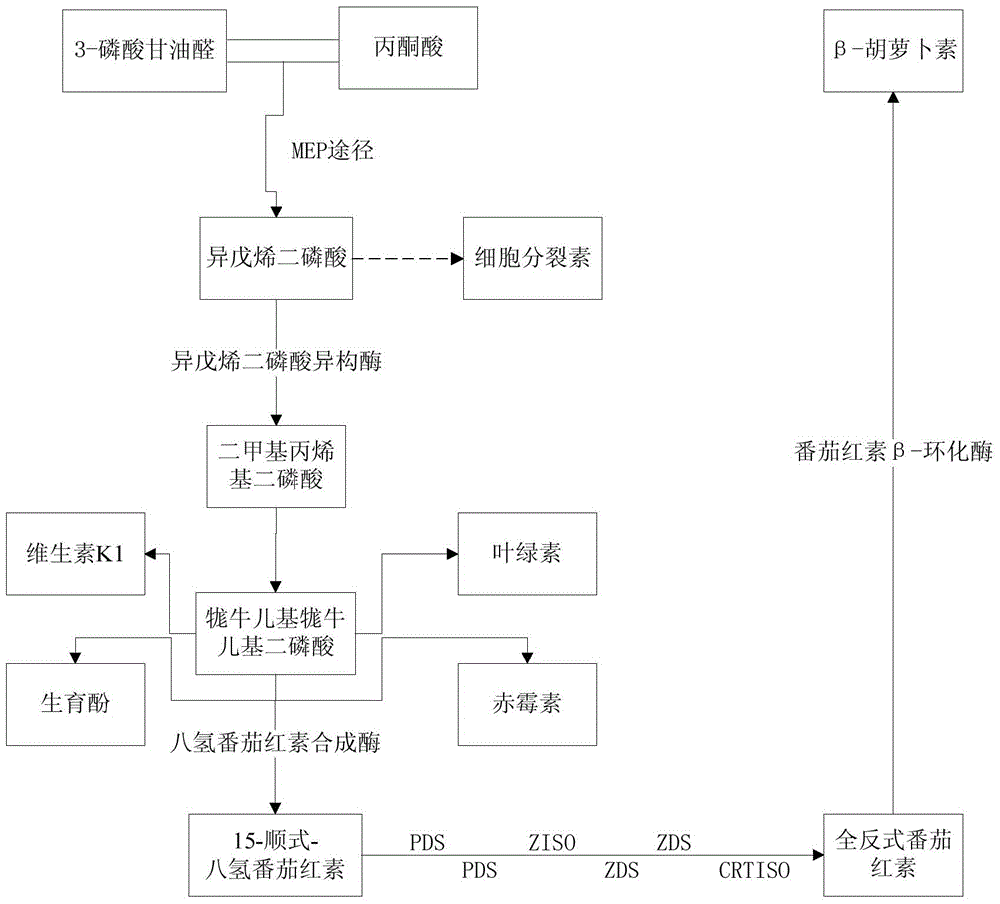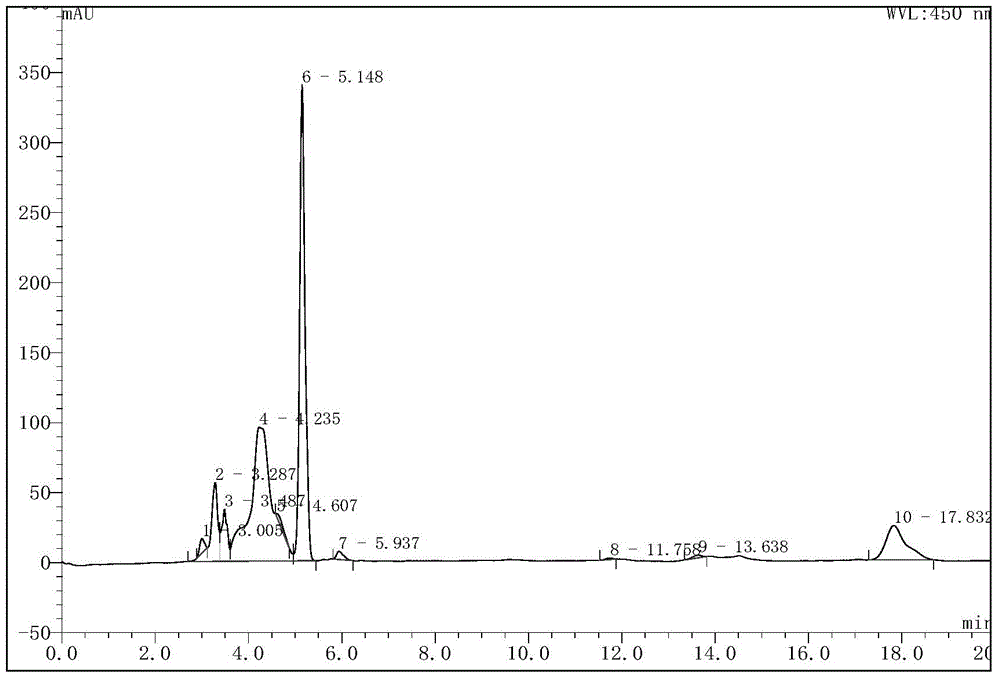Method for producing lycopene by blocking metabolic pathway of Dunaliella bardawil
A technology of lycopene and pasteurian salina, applied in the field of food science, can solve the problems of difficult industrialized large-scale production, high growth environment requirements, cumbersome extraction process, etc., and achieves short extraction cycle, simple extraction method, and simple environmental requirements Effect
- Summary
- Abstract
- Description
- Claims
- Application Information
AI Technical Summary
Problems solved by technology
Method used
Image
Examples
Embodiment 1
[0034] (1) Preparation of Dunaliella culture solution
[0035] Preparation of salina culture medium: NaNO 3 0.420g / L, NaCl87.69g / L, NaH 2 PO 4 2H 2 O0.156g / L, NaHCO 3 0.840g / L, KCl0.074g / L, MgSO 4 ·7H 2 O1.230g / L, CaCl 2 2H 2 O0.044g / L, 0.1% EDTA iron 0.5ml / L. Add 1ml / L of A5 trace element solution to the culture medium to adjust the pH to 7.5. A5 trace element solution, its composition is as follows: H 3 BO 3 286,MnCl 2 4H 2 O181, ZnSO 4 ·7H 2 O22, CuSO 4 ·5H 2 O7.9, (NH 4 ) 6 Mo 7 o 24 4H 2 O3.9, the unit is mg / 100ml. Salina culture solution was divided into 500ml Erlenmeyer flasks by 100ml per bottle, sealed with four layers of gauze, and sterilized under high temperature at 100kPa for 20min. Use after cooling at room temperature.
[0036] (2) Inoculation culture
[0037] Centrifuge the algae solution in the algebraic growth phase at 5000r / min for 10min, discard the culture solution, add the algae cells into a Erlenmeyer flask filled with fresh cultur...
Embodiment 2
[0048] (1) Dunaliella culture fluid preparation (with embodiment 1)
[0049] (2) Inoculation culture
[0050] Same as Example 1, the difference is that the amount of blocking agent added is different, and the amount of triethylamine added in this embodiment is 200ppm.
[0051] (3) assay (with embodiment 1)
[0052] After adding triethylamine for 12 hours, there was no lycopene peak.
[0053] After adding triethylamine for 24 hours, the peak height of lycopene was 1.938mAU.
[0054] After adding triethylamine for 48 hours, the peak height of lycopene was 7.224mAU.
[0055] After adding triethylamine for 72 hours, the peak height of lycopene was 6.310mAU.
[0056] Among them, the peak height of lycopene reached a maximum value of 7.224mAU after adding the blocking agent for 48 hours.
Embodiment 3
[0058] (1) Dunaliella culture fluid preparation (with embodiment 1)
[0059] (2) Inoculation culture
[0060] Same as Example 1, the difference is that the amount of blocking agent added is different, and the amount of triethylamine added in this embodiment is 800ppm.
[0061] (3) assay (with embodiment 1)
[0062] After adding triethylamine for 12 hours, there was no lycopene peak.
[0063] After adding triethylamine for 24 hours, the peak height of lycopene was 1.598mAU.
[0064] After adding triethylamine for 48 hours, the peak height of lycopene was 4.357mAU.
[0065] Among them, the peak height of lycopene reaches the maximum value of 7.570mAU after adding the blocking agent for 72 hours.
PUM
 Login to View More
Login to View More Abstract
Description
Claims
Application Information
 Login to View More
Login to View More - R&D
- Intellectual Property
- Life Sciences
- Materials
- Tech Scout
- Unparalleled Data Quality
- Higher Quality Content
- 60% Fewer Hallucinations
Browse by: Latest US Patents, China's latest patents, Technical Efficacy Thesaurus, Application Domain, Technology Topic, Popular Technical Reports.
© 2025 PatSnap. All rights reserved.Legal|Privacy policy|Modern Slavery Act Transparency Statement|Sitemap|About US| Contact US: help@patsnap.com



